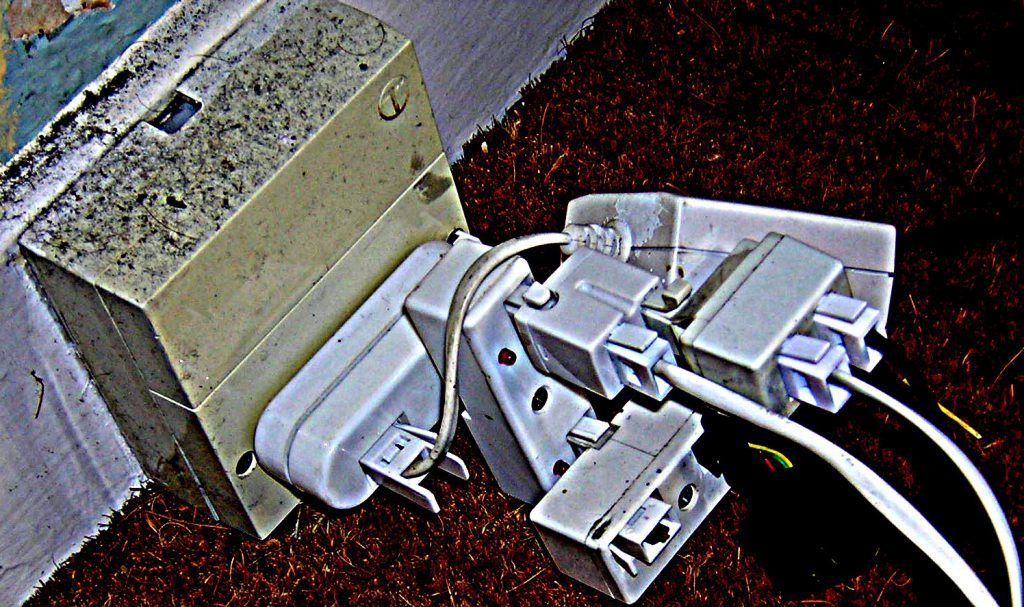Adding telephone extension wiring from your Master Socket is easy, isn’t it? Well, yes and no. As a telephone engineer with a background in business telephone systems, I’ve always wondered why my colleagues have avoided working on home installations. Over the past few years, I’ve begun to find out why.
I’ve been brave enough to expand our business into the whole area of domestic work, having tired of running up and down the country sorting things out for major businesses.
Quite simply, a lot of stuff is bodged, and tends to fall apart as soon as you make any changes to it. That is, if you can understand how someone has put it together in the first place… It’s often more challenging than working at a large office.
So, if you are doing telephone extension wiring in your house, its always advisable to hard-wire an additional socket properly, using quality materials. It’s not hard, and will save time (in the long-term), trouble, and expense.
There is plenty of information on-line to explain how to hard-wire an extension. I thought I’d take an alternative approach, and point out what causes me (and the customer) problems.
So, these are some of the short-cuts that people take that result in faults:-
Socket Doublers and extension leads. Socket Doublers are those things you can buy that plug in the front of a single phone socket and give two sockets, as per the photo above. Made very cheaply, probably in China. Known to break, cause crackly lines, and all kinds of odd problems. Get rid of them if you can! Add these to the plug-in long extension leads that can be bought, and this will guarantee to slow your broadband down.
Braided Cable. (Arrgh!) Proper cable for phone extensions has a solid core, rather like a miniature version of the mains cable which your house is wired with. Many houses have telephone extension cabling done with stuff that is made up of tiny strands forced (“braided”) together. Compare this to the mains leads you get for domestic appliances like irons and TVs. And proper cable has a gentle “twist” built in it to avoid interference between the pair of wires carrying the signal. Braided cable generally does not. And related to it is the whole issue of…
Screw Connections. Braided cable can only be attached to things (sockets, etc) via screw connectors. The proper solid-core stuff uses a “punch-down” method which is quick, reliable, easy, and effective. But it requires a special tool. If you use a screwdriver to poke the wire in, you risk damaging the socket. Screw connections and braided cable have cost my customers much time and money. A decent tool can be bought from Maplin for not very much to punch cables down into proper sockets. It’s cheaper than precious telephone engineer time in fixing faults.
Internal-grade Cable Run Outside. White cable is meant to be used internally. I see much of it run around the outside of houses. Exposed to weather, it breaks down and starts causing irritating, intermittent problems. External grade cable has a tough, black sheath, and lasts. You don’t have to buy a huge drum of it – you will find short lengths for sale on eBay.
Use of the Wrong Tool to Punch a Cable Down. The connectors in sockets (as found in the front plate of your master socket) have an ingenious connector, designed to simultaneously strip the cable and make connection. If done properly, it is very strong. However, you need to use the proper tool to push the unstripped cable into the connector “slot”. The cables have a 0.5mm solid core, and the slightest damage to the “slot” in the socket prevents it gripping and connecting. A screwdriver blade will damage the slot and make the socket useless.
Naughty Connections Upstream of Master Socket. As per an earlier, very popular blog, your master socket is the border between you and your telecomms provider, and, in general, is maintained by Openreach, a former BT engineering company. I have seen extensions added by someone having broken into the cable on the “provider” side, or through the terminals onto which this comes in. Naughty. Openreach will charge you for any faults arising from this, and could, in theory, fine you for tampering with their equipment. All extensions should be routed through the detachable front-plate of your master socket.
And, of course, the best solution for adding telephone extension wiring is to get an experienced professional in to do it. Despite my grumpiness mentioned at the start of this blog, I love meeting new folks and sorting out their problems.Please be in touch!
